Chrysler 2008 Annual Report Download - page 267
Download and view the complete annual report
Please find page 267 of the 2008 Chrysler annual report below. You can navigate through the pages in the report by either clicking on the pages listed below, or by using the keyword search tool below to find specific information within the annual report.-
 1
1 -
 2
2 -
 3
3 -
 4
4 -
 5
5 -
 6
6 -
 7
7 -
 8
8 -
 9
9 -
 10
10 -
 11
11 -
 12
12 -
 13
13 -
 14
14 -
 15
15 -
 16
16 -
 17
17 -
 18
18 -
 19
19 -
 20
20 -
 21
21 -
 22
22 -
 23
23 -
 24
24 -
 25
25 -
 26
26 -
 27
27 -
 28
28 -
 29
29 -
 30
30 -
 31
31 -
 32
32 -
 33
33 -
 34
34 -
 35
35 -
 36
36 -
 37
37 -
 38
38 -
 39
39 -
 40
40 -
 41
41 -
 42
42 -
 43
43 -
 44
44 -
 45
45 -
 46
46 -
 47
47 -
 48
48 -
 49
49 -
 50
50 -
 51
51 -
 52
52 -
 53
53 -
 54
54 -
 55
55 -
 56
56 -
 57
57 -
 58
58 -
 59
59 -
 60
60 -
 61
61 -
 62
62 -
 63
63 -
 64
64 -
 65
65 -
 66
66 -
 67
67 -
 68
68 -
 69
69 -
 70
70 -
 71
71 -
 72
72 -
 73
73 -
 74
74 -
 75
75 -
 76
76 -
 77
77 -
 78
78 -
 79
79 -
 80
80 -
 81
81 -
 82
82 -
 83
83 -
 84
84 -
 85
85 -
 86
86 -
 87
87 -
 88
88 -
 89
89 -
 90
90 -
 91
91 -
 92
92 -
 93
93 -
 94
94 -
 95
95 -
 96
96 -
 97
97 -
 98
98 -
 99
99 -
 100
100 -
 101
101 -
 102
102 -
 103
103 -
 104
104 -
 105
105 -
 106
106 -
 107
107 -
 108
108 -
 109
109 -
 110
110 -
 111
111 -
 112
112 -
 113
113 -
 114
114 -
 115
115 -
 116
116 -
 117
117 -
 118
118 -
 119
119 -
 120
120 -
 121
121 -
 122
122 -
 123
123 -
 124
124 -
 125
125 -
 126
126 -
 127
127 -
 128
128 -
 129
129 -
 130
130 -
 131
131 -
 132
132 -
 133
133 -
 134
134 -
 135
135 -
 136
136 -
 137
137 -
 138
138 -
 139
139 -
 140
140 -
 141
141 -
 142
142 -
 143
143 -
 144
144 -
 145
145 -
 146
146 -
 147
147 -
 148
148 -
 149
149 -
 150
150 -
 151
151 -
 152
152 -
 153
153 -
 154
154 -
 155
155 -
 156
156 -
 157
157 -
 158
158 -
 159
159 -
 160
160 -
 161
161 -
 162
162 -
 163
163 -
 164
164 -
 165
165 -
 166
166 -
 167
167 -
 168
168 -
 169
169 -
 170
170 -
 171
171 -
 172
172 -
 173
173 -
 174
174 -
 175
175 -
 176
176 -
 177
177 -
 178
178 -
 179
179 -
 180
180 -
 181
181 -
 182
182 -
 183
183 -
 184
184 -
 185
185 -
 186
186 -
 187
187 -
 188
188 -
 189
189 -
 190
190 -
 191
191 -
 192
192 -
 193
193 -
 194
194 -
 195
195 -
 196
196 -
 197
197 -
 198
198 -
 199
199 -
 200
200 -
 201
201 -
 202
202 -
 203
203 -
 204
204 -
 205
205 -
 206
206 -
 207
207 -
 208
208 -
 209
209 -
 210
210 -
 211
211 -
 212
212 -
 213
213 -
 214
214 -
 215
215 -
 216
216 -
 217
217 -
 218
218 -
 219
219 -
 220
220 -
 221
221 -
 222
222 -
 223
223 -
 224
224 -
 225
225 -
 226
226 -
 227
227 -
 228
228 -
 229
229 -
 230
230 -
 231
231 -
 232
232 -
 233
233 -
 234
234 -
 235
235 -
 236
236 -
 237
237 -
 238
238 -
 239
239 -
 240
240 -
 241
241 -
 242
242 -
 243
243 -
 244
244 -
 245
245 -
 246
246 -
 247
247 -
 248
248 -
 249
249 -
 250
250 -
 251
251 -
 252
252 -
 253
253 -
 254
254 -
 255
255 -
 256
256 -
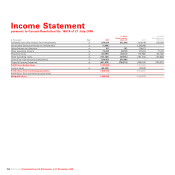 257
257 -
 258
258 -
 259
259 -
 260
260 -
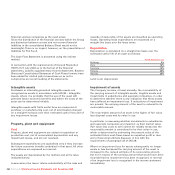 261
261 -
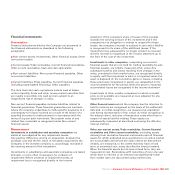 262
262 -
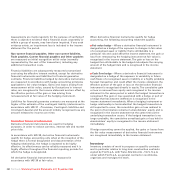 263
263 -
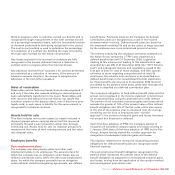 264
264 -
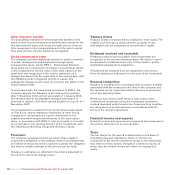 265
265 -
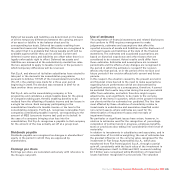 266
266 -
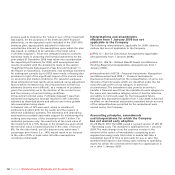 267
267 -
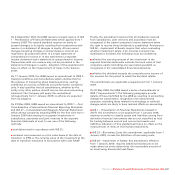 268
268 -
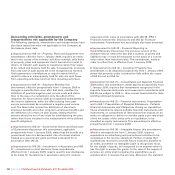 269
269 -
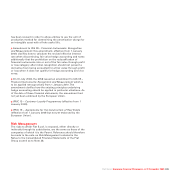 270
270 -
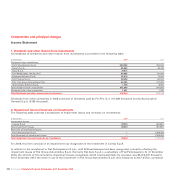 271
271 -
 272
272 -
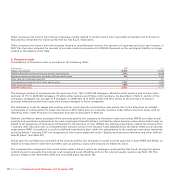 273
273 -
 274
274 -
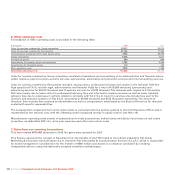 275
275 -
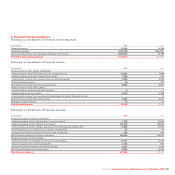 276
276 -
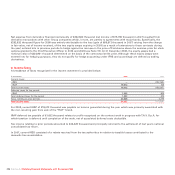 277
277 -
 278
278 -
 279
279 -
 280
280 -
 281
281 -
 282
282 -
 283
283 -
 284
284 -
 285
285 -
 286
286 -
 287
287 -
 288
288 -
 289
289 -
 290
290 -
 291
291 -
 292
292 -
 293
293 -
 294
294 -
 295
295 -
 296
296 -
 297
297 -
 298
298 -
 299
299 -
 300
300 -
 301
301 -
 302
302 -
 303
303 -
 304
304 -
 305
305 -
 306
306 -
 307
307 -
 308
308 -
 309
309 -
 310
310 -
 311
311 -
 312
312 -
 313
313 -
 314
314 -
 315
315 -
 316
316 -
 317
317 -
 318
318 -
 319
319 -
 320
320 -
 321
321 -
 322
322 -
 323
323 -
 324
324 -
 325
325 -
 326
326 -
 327
327 -
 328
328 -
 329
329 -
 330
330 -
 331
331 -
 332
332 -
 333
333 -
 334
334 -
 335
335 -
 336
336 -
 337
337 -
 338
338 -
 339
339 -
 340
340 -
 341
341 -
 342
342 -
 343
343 -
 344
344 -
 345
345 -
 346
346 -
 347
347 -
 348
348 -
 349
349 -
 350
350 -
 351
351 -
 352
352 -
 353
353 -
 354
354 -
 355
355 -
 356
356
 |
 |
Fiat S.p.A. Statutory Financial Statements at 31 December 2008266
process used to determine the ‘value in use’ of this investment
was based, for the purposes of the 2006 and 2007 financial
statements, on the expected results included in the 2007-2010
business plan, appropriately adjusted for risks and
uncertainties inherent in the assumptions upon which the plan
was based, in addition to an estimate of terminal value
(“ultimate disposal”). Given the changed economic scenario,
estimates made in preparing the financial statements for the
year ended 31 December 2008 have taken into consideration
the expected performance for 2009, with assumptions and
results consistent with the statements made in the section
“Significant Events Subsequent to Year End and Outlook” in
the Report on Operations. Consistently, new earnings estimates
for subsequent periods (up to 2012) were made, reflecting due
prudence in light of the significant impact of the current crisis
on economic and market conditions. For valuation purposes,
these estimated annual results were reduced, using adjustment
factors which increased over the projected time horizon (as
estimates become more difficult), as a measure of prudence
given the uncertainty as to the duration of the current crisis
and the recovery of normal trading conditions.
A theoretical terminal value (“ultimate disposal”) was then
estimated averaging the forecast results for 2011 and 2012,
adjusted as described above and without any future growth
rate assumption being made.
A discount rate of 15% was used, which is considered
particularly prudent both for the sector and the regions in
which the subsidiary operates. The estimates and underlying
assumptions provided reasonable support for maintaining the
existing carrying value of the investment at €4.7 billion. For
indicative purposes only, the sensitivity of the book value of
the investment to a 10% change in the projections upon which
the terminal value is based would be in the order of around
6%. On the other hand, use of a discount rate which was 1
percentage point lower (i.e., 14%) would result in an increase
in the order of 9% in book value (all other assumptions
remaining unchanged).
Interpretations and amendments
effective from 1 January 2008 but not
applicable to the Company
The following interpretations, applicable for 2008, relate to
matters that are not applicable to the Company.
IFRIC 12 –
Service Concession Arrangements
(applicable
retrospectively from 1 January 2008);
IFRIC 14 - IAS 19 –
Defined Benefit Assets and Minimum
Funding Requirements
(applicable retrospectively from 1
January 2008);
Amendments to IAS 39 -
Financial Instruments: Recognition
and Measurement
and IFRS 7 -
Financial Instruments:
Disclosures
that would permit the reclassification of some non-
derivative financial assets which are classified under the fair
value through profit or loss category in particular
circumstances. The amendment also permits an entity to
transfer a financial asset from the available-for-sale category to
the loans and receivables category where it has the intention
and ability to hold such asset for the foreseeable future.
Although this amendment applies from 1 July 2008, it has had
no effect on the financial statements presented herein as none
of the reclassifications permitted by the amendment were
carried out by the Company.
Accounting principles, amendments
and interpretations for which the Company
has not elected early adoption
On 29 March 2007 the IASB issued a revised version of IAS 23
– Borrowing costs. The standard is applicable from 1 January
2009. The main change from the previous version is the
removal of the option of immediately recognising as an
expense borrowing costs that relate to assets that take a
substantial period of time to get ready for use or sale. The
standard shall apply to borrowing costs relating to qualifying
assets for which the commencement date for capitalisation is
on or after 1 January 2009.
